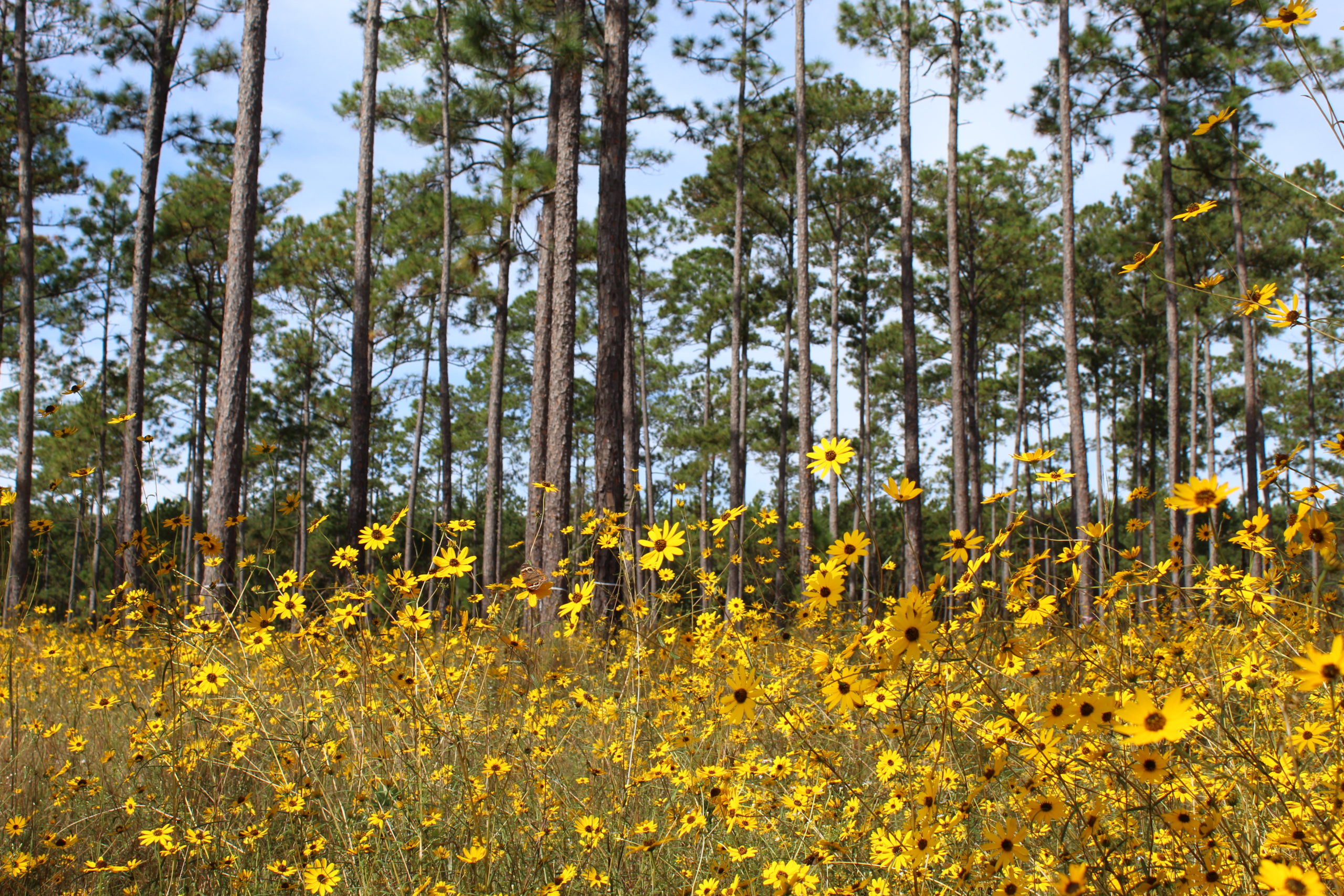Bordering the Conecuh National Forest in Covington and Escambia Counties near Andalusia, Ala, the Solon Dixon Forestry Education Center’s 5,430 acres include a diversity of habitat types such as freshwater springs, longleaf pine forests, bottomland hardwoods, and Conecuh River frontage.
Management Philosophy
The Dixon Center’s management philosophy of its 5,430 acres is driven by Solon’s objective that the facility be operationally self-sufficient while practicing good land stewardship. Historically and today, this is accomplished through integrated forest management involving sustainable timber harvesting, agriculture and hunting leases, and occupancy by various user groups.

Forestry
The Dixon Center is comprised of 5,430 total acres. Approximately 3,600 acres are working forest, 260 acres are in agriculture leases, and the remainder are in various stages/types of management or “set-aside areas.”
Wildlife Habitat
Much like the plants, an abundance of wildlife can be found at the Dixon Center because of the diverse natural habitats that exist within the property and the forest management activities diligently practiced to enhance them.
Native Understory
Forest management activities that promote native understories include timber harvesting to open canopies for sunlight, prescribed fire (especially during the growing season) along with selective herbicide treatment.
Water and Special Features
Evidence of Karst formation can be found in several locations at the Dixon Center. Along with the many small sinkholes on the property, there is a 3.5-acre water-filled sinkhole within a short walk from the main campus.
Management Tools
The tools of prescribed fire, timber harvesting and machinery, and selective herbicides can be used independently for a singular positive outcome. Still, when integrating these practices, desired outcomes are often achieved in a shorter period
with longer-lasting effects.
Prescribed Fire
Fire improves accessibility, makes plants more palatable, improves crude protein, promotes seed production, and increases the presence of insects.
Timber Harvest and Machinery
Timber harvesting and other machinery benefit wildlife and native understory by removing overhead competition, thus allowing sunlight to reach the forest floor and stimulating preferred vegetative components.
Selective Herbicides
Selective herbicide application is a key component in the reestablishment of native understories.
